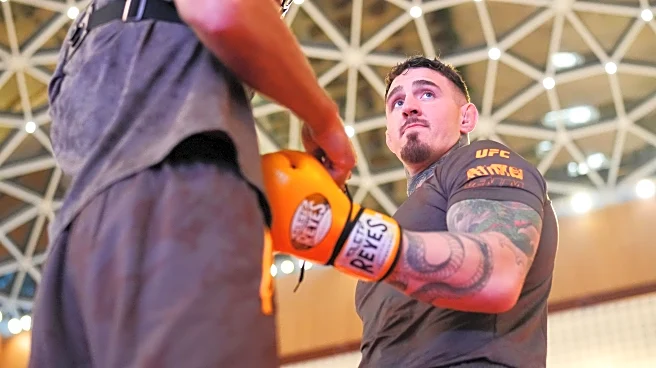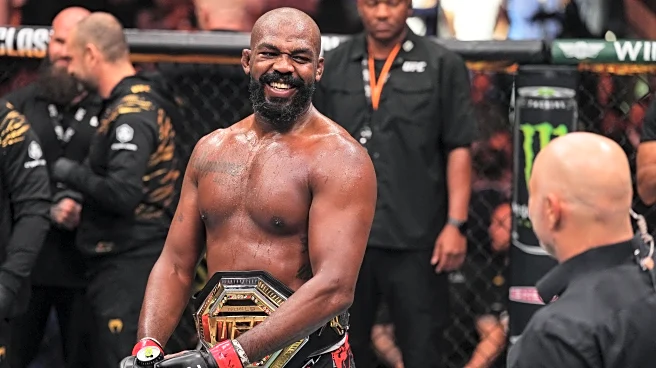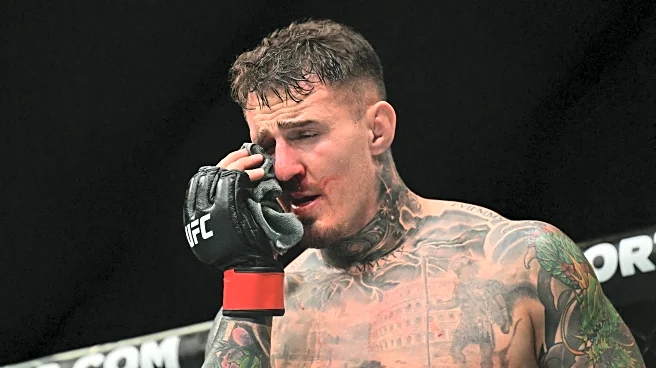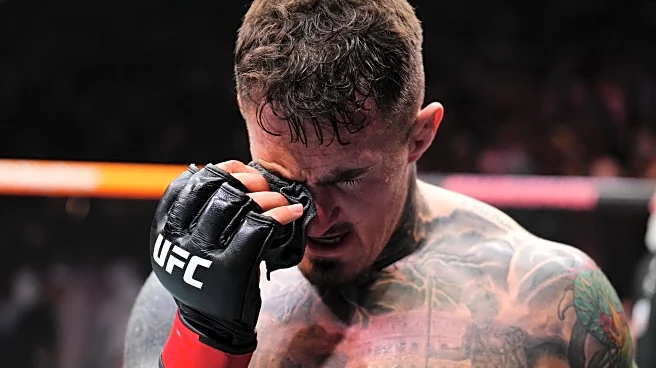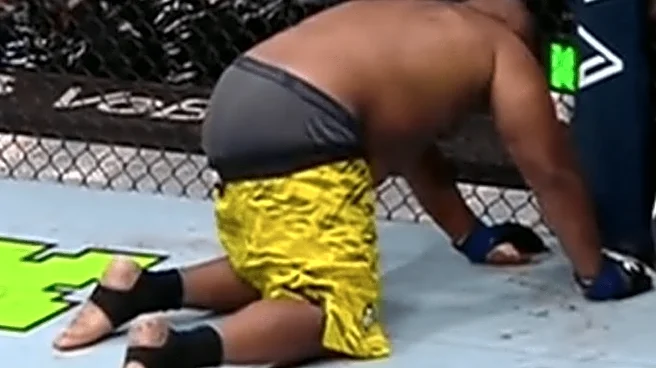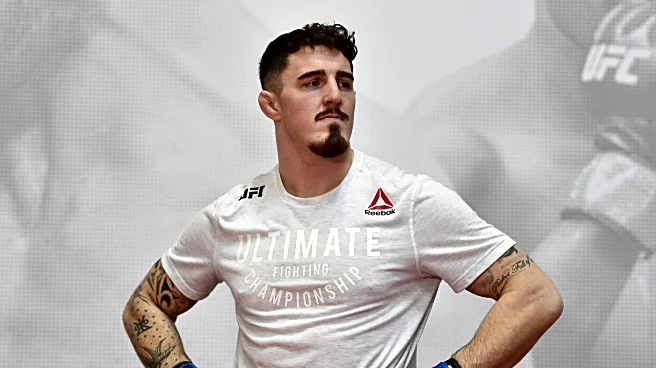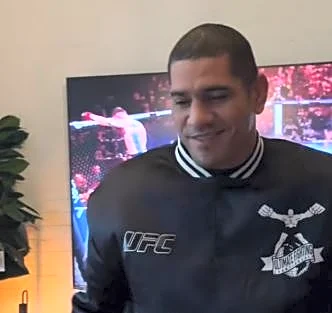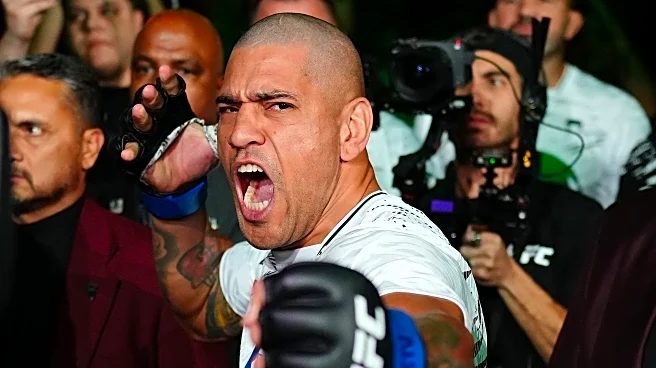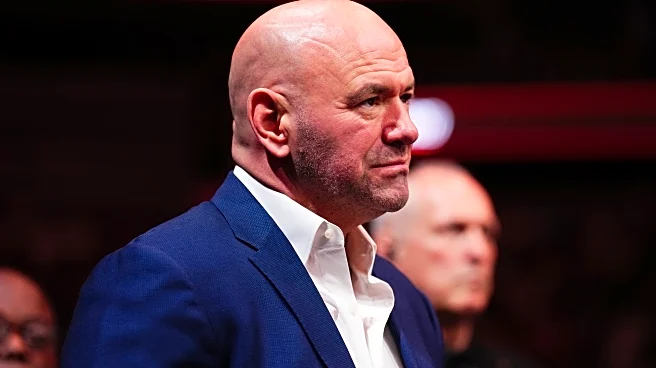What's Happening?
Jon Jones has stirred the pot following the controversial conclusion of UFC 321 in Abu Dhabi, where the main event ended abruptly due to an eye-poke incident involving Tom Aspinall and Ciryl Gane. The fight was declared a no-contest, disappointing fans
who anticipated Aspinall's first title defense as the new heavyweight champion. Aspinall had recently been elevated from interim to full champion after Jon Jones vacated the title due to injury. In the aftermath, Jones took to social media to shift focus from Aspinall to Alex Pereira, expressing interest in a potential superfight. Jones invited Pereira to a showdown at the White House, scheduled for June 4, marking his anticipated return to the octagon. Pereira, the current UFC light-heavyweight champion, responded with enthusiasm, hinting at his ambition to conquer a third championship.
Why It's Important?
The developments at UFC 321 have significant implications for the heavyweight division and the broader UFC landscape. Jon Jones's challenge to Alex Pereira could set the stage for a high-profile bout that would attract substantial attention and revenue. This potential matchup pits two of the sport's most skilled fighters against each other, promising a spectacle for fans and stakeholders. The incident also leaves the heavyweight title picture in flux, with Aspinall's status uncertain pending medical evaluations. The outcome of these events could reshape the division's hierarchy and influence future title fights, impacting fighters' careers and the UFC's promotional strategies.
What's Next?
As the UFC navigates the fallout from UFC 321, several key developments are anticipated. Tom Aspinall will undergo further medical assessments to determine his readiness to compete again, while Ciryl Gane may seek a rematch to resolve the inconclusive bout. Meanwhile, Jon Jones's proposed fight with Alex Pereira at the White House event could become a focal point for the UFC, drawing significant media and fan interest. The organization will likely strategize to capitalize on the heightened intrigue surrounding the heavyweight division, potentially scheduling additional high-stakes matchups to maintain momentum and viewer engagement.




